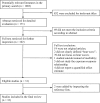Heat waves and morbidity: current knowledge and further direction-a comprehensive literature review
- PMID: 25993103
- PMCID: PMC4454966
- DOI: 10.3390/ijerph120505256
Heat waves and morbidity: current knowledge and further direction-a comprehensive literature review
Abstract
In the past few decades, several devastating heat wave events have significantly challenged public health. As these events are projected to increase in both severity and frequency in the future, it is important to assess the relationship between heat waves and the health indicators that can be used in the early warning systems to guide the public health response. Yet there is a knowledge gap in the impact of heat waves on morbidity. In this study, a comprehensive review was conducted to assess the relationship between heat waves and different morbidity indicators, and to identify the vulnerable populations. The PubMed and ScienceDirect database were used to retrieve published literature in English from 1985 to 2014 on the relationship between heat waves and morbidity, and the following MeSH terms and keywords were used: heat wave, heat wave, morbidity, hospital admission, hospitalization, emergency call, emergency medical services, and outpatient visit. Thirty-three studies were included in the final analysis. Most studies found a short-term negative health impact of heat waves on morbidity. The elderly, children, and males were more vulnerable during heat waves, and the medical care demand increased for those with existing chronic diseases. Some social factors, such as lower socioeconomic status, can contribute to heat-susceptibility. In terms of study methods and heat wave definitions, there remain inconsistencies and uncertainties. Relevant policies and guidelines need to be developed to protect vulnerable populations. Morbidity indicators should be adopted in heat wave early warning systems in order to guide the effective implementation of public health actions.
Keywords: emergency medical care; heat waves; hospitalization; morbidity.
References
-
- IPCC . Climate Change 2013: The Physical Science Basis. Contribution of Working Group I to the Fifth Assessment Report of the Intergovernmental Panel on Climate Change. Cambridge University Press; Cambridge, UK: 2013.
-
- IPCC . Managing the Risks of Extreme Events and Disasters to Advance Climate Change Adaptation. A Special Report of Working Groups I and II of the Intergovernmental Panel on Climate Change. Cambridge University Press; Cambridge, UK: 2012. - PubMed
-
- Martiello M.A., Baldasseroni A., Buiatti E., Giacchi M.V. Health effects of heat waves. PMC. 2008;64:735–772. - PubMed
Publication types
MeSH terms
LinkOut - more resources
Full Text Sources
Other Literature Sources
Research Materials
Miscellaneous


